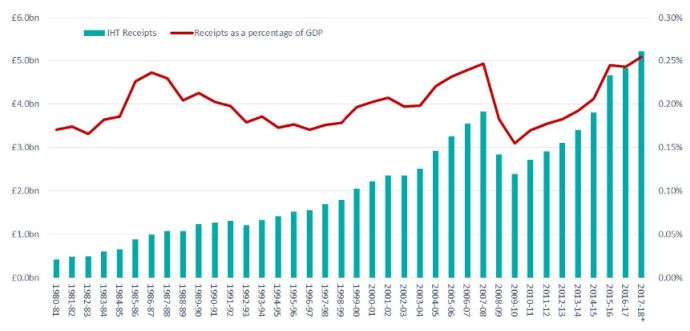Inheritance tax (IHT) is most commonly encountered on a person's death, although it extends beyond death to lifetime gifts and some other situations. Conceptually it is a tax on the transfer of wealth.
As all individuals have a "nil rate band" of £325,000 allowing assets up to that aggregate value to be passed on death before IHT becomes payable and because there are a number of available reliefs and exemptions, in practice IHT does not affect very many people. However, when it does become payable, as the rate is normally 40% of an asset's value, the amount of tax to pay can be very substantial.
Data recently produced by HMRC (HMRC Tax & NIC Receipts, 24 April 2018) illustrates that receipts from Inheritance Tax, which have been steadily rising since 2009/10, have passed the £5 billion mark for the first time. With increasing levels of wealth held by an increasing number of people at the time of their death, the trend is set to continue.

Source: HMRC Tax & NIC Receipts, 24 April 2018
The content of this article is intended to provide a general guide to the subject matter. Specialist advice should be sought about your specific circumstances.
We operate a free-to-view policy, asking only that you register in order to read all of our content. Please login or register to view the rest of this article.

